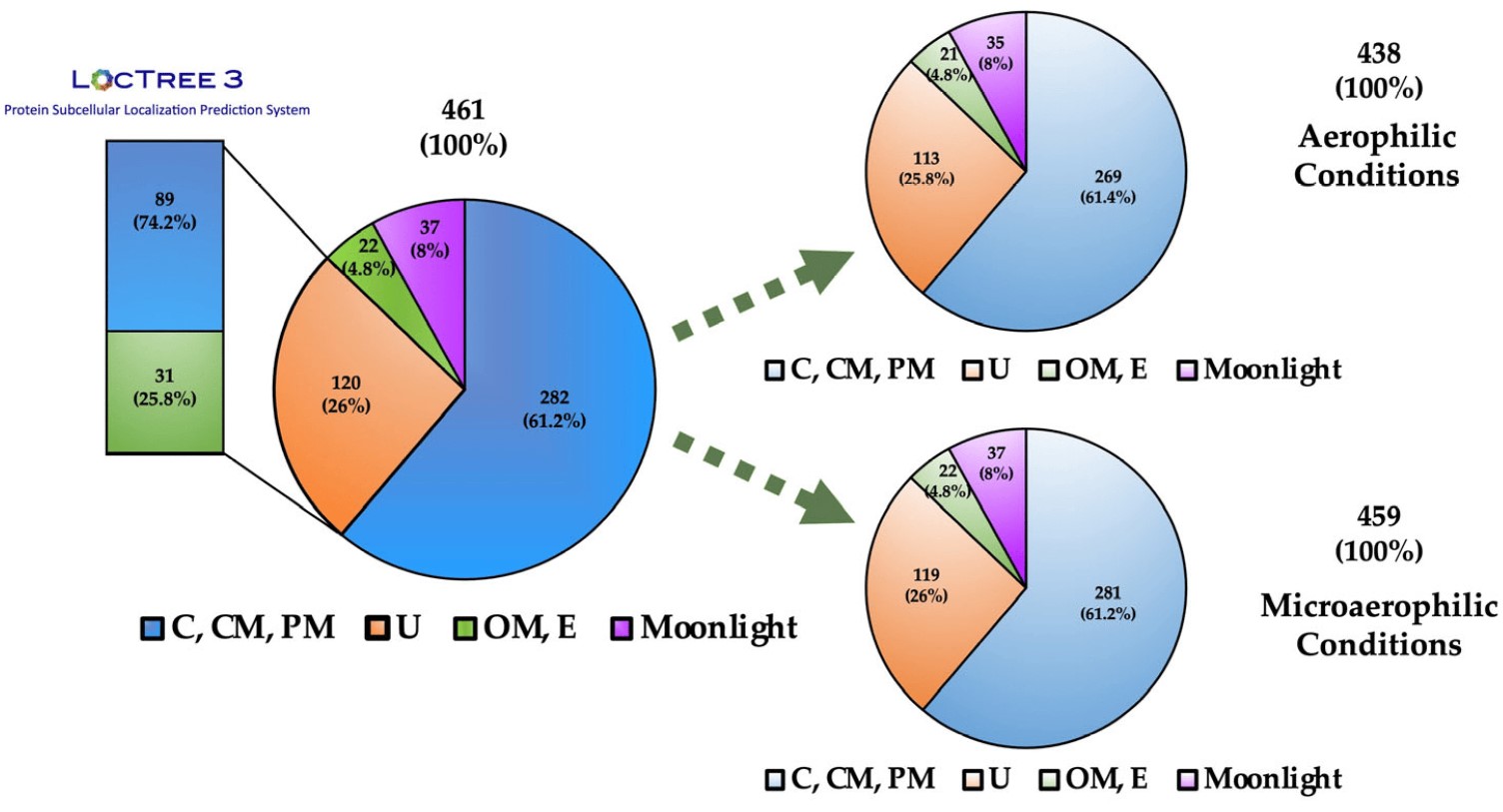Surface-exposed protein moieties of Burkholderia cenocepacia J2315 in microaerophilic and aerobic conditions

Burkholderia cepacia complex infections remain life-threatening to cystic fibrosis patients, and due to the limited eradication efficiency of current treatments, novel therapies are urgently needed. Surface proteins are among the best targets to develop new therapeutic strategies since they are exposed to the host’s immune system. In a recent paper in the journal Vaccines (https://doi.org/10.3390/vaccines12040398), the BSRG team headed by Jorge H. Leitão in collaboration with Prof. Manuel Rodríguez-Ortega (U. Cordoba, Spain), used a surface-shaving approach to quantitatively compare the relative abundance of surface-exposed proteins (SEPs) expressed by Burkholderia cenocepacia J2315 when grown under aerobic and microaerophilic conditions. A total of 461 proteins with ≥2 unique peptides were identified. Bioinformatics analyses revealed a total of 53 proteins predicted as localized at the outer membrane (OM) or extracellularly (E). Additionally, 37 proteins were predicted as moonlight proteins with OM or E secondary localization. B-cell linear epitope bioinformatics analysis of the proteins predicted to be OM and E-localized revealed 71 SEP moieties with predicted immunogenic epitopes. Additionally, 10 of the OM proteins also presented a high probability of playing important roles in adhesion to host cells, making them potential targets for passive immunotherapeutic approaches. See more.
